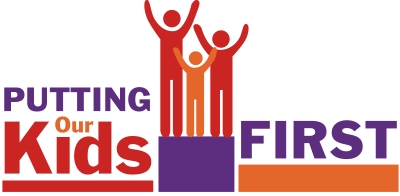I attended last night’s TESD Budget Workshop for the development of 2013-14 budget. Sue Tiede, Director of Personnel presented enrollment history and trends, projected staffing needs and changes for the District.
In the review of staffing changes from 2008 to 2013, it was interesting to note that full-time teachers during this period has decreased by 48 teachers, compared to an enrollment increase of 355 students during the same period. The total enrollment in 2008-09 was 6,132 increasing to 6,487 in 2012-13, which indicates a 5.8% increase or 355 students.
An enrollment history chart dating from 1975 to 2012, indicated that in 1975 the District enrollment at 6,497 students. From that point, 37 years ago, the District’s enrollment steadily decreased for 15 years to its lowest point in 1989 of 3,990 students. Starting in 1990, the District’s enrollment began to increase yearly to 6,487 students in 2012, which marked the highest enrollment since 1975, when there were 6,497 students. We know that there are currently 48 teachers fewer than in 2008, but the chart did not indicate what the staffing was in 1975, when the enrollment was within 10 students of where it is today.
The projected requirement for 2013-14 indicates additional staffing needs of 7.6 educators. Included in the 7.6 staffing number is the addition of one special education, one technology and three mental health specialists. The special education professional is for autistic support.
The District’s Business Manager Art McDonnell presented updates on property tax revenue lost from reassessments and economic impact on other local revenues (interest income, transfer tax, delinquent tax, and interim tax) and provided a revenue variance analysis and 2013-14 budget summary. In 2006-07, the annual property tax revenue lost to the District in reassessments was $256,561.
As presented by McDonnell, annually since 2006-07, residents and commercial property owners have continued to appeal their property taxes. The annual loss to the District in property tax revenue due to reassessments is as follows: 2006-07: $256,561; 2007-08: $244,236; 2008-09: $417,041; 2009-10: $975,994; 2010-11: $826,923; 2011-12: $595,072; and 2012-13: $411,051. However, these numbers do not paint the total picture. There is a cumulative loss as the new reassessment revenue loss is compounded each year. The accurate property tax revenue lost to the District from assessment appeals based on the cumulative effect is as follows: 2006-07: $256,561; 2007-08: $512,000; 2008-09: $44,126; 2009-10: $1,947,142; 2010-11: $2,847,464; 2011-12: $3,536,508; and 2012-13: $3,946,559. The District’s budget for 2012-13 is nearly $4 Million less due to property tax revenue lost from assessment appeals. And by the way, the $4 Million may go up as Vanguard’s assessment appeal remains an open issue; scheduled court date is April.
McDonnell presented the economic impact on other local revenues (interest income, transfer tax, delinquent tax and interim tax). Although we all know that the interest income rates at the banks is nearly nonexistent these days, it is certainly evident when reviewing the District’s financials. In 2006-07, the District earned about $3 Million in interest income versus $109K in 2011-12. However, there was some encouraging news – the District’s interest income for 2012-13 is projected to nearly double from last year, $200K. The transfer tax revenue is also indicating projected growth, from approx. $1.7 Million last year to projected $1.8 Million for 2012-13. Looking at the total revenues from interest income, transfer tax, delinquent tax and interim tax, the District is projecting $3,227,647 for 2012-13, down from last year’s $3,981,314 – indicating an approx. $750K loss in revenue. However, when you look at interest income, transfer tax, delinquent tax and interim tax in 2006-07, the total revenues to the District was $7,542,466 – approximately $4.3 million more dollars than projected for 2012.13.
McDonnell was able to provide some possible good news. Under Governor Corbett’s 2013-14 proposed budget, the state subsidy revenue for TESD is basic education funding increase of $92,016 and special education funding decrease of $11,024 – providing a net increase of $80,992 in state subsidy revenue. This is cautionary news as Corbett’s budget is the preliminary stage.
The impact items included in the District’s 2013-14 budget: $200K for administrator salary increases, $250K for District safety enhancements and $125K for support staff for network upgrade. Open budget impact items under consideration including the outsourcing of TENIG staff and outsourcing of aides and paraeducators. The President of TENIG, Dave Fillippo, read a statement in regards to outsourcing, which will be presented in a separate post.
 The important board meeting last night left many of us with a lot more questions than answers! Starting about 15 minutes late, it was two hours in before there were any comments/questions from the community.
The important board meeting last night left many of us with a lot more questions than answers! Starting about 15 minutes late, it was two hours in before there were any comments/questions from the community. There’s an important school board meeting tonight at 7:30 PM – on the agenda, a discussion on updated Chester County Health Department guidance for the reopening of schools. Priority discussion topics include the District’s “School Instructional Model Plan” – How (and when) will the District fully open schools? (For agenda and instructions on submitting questions and viewing the meeting,
There’s an important school board meeting tonight at 7:30 PM – on the agenda, a discussion on updated Chester County Health Department guidance for the reopening of schools. Priority discussion topics include the District’s “School Instructional Model Plan” – How (and when) will the District fully open schools? (For agenda and instructions on submitting questions and viewing the meeting, 